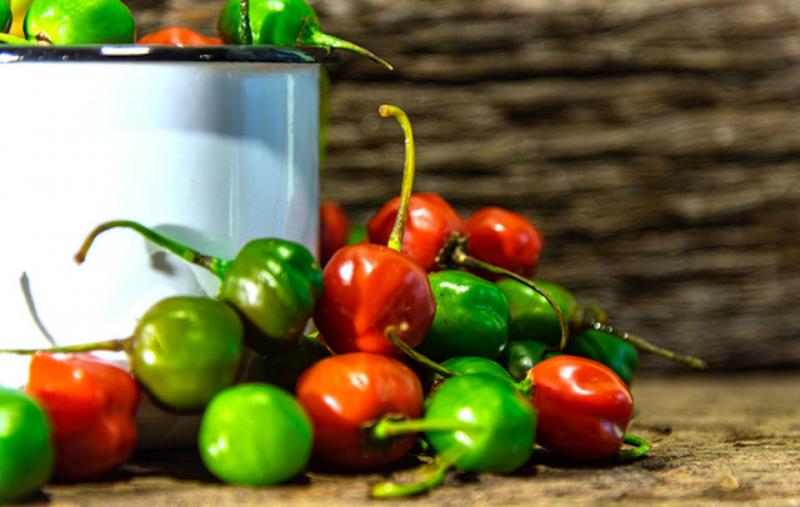Imagine finding a real mermaid skeleton. A late 18th-century mermaid skeleton fascinated the world until it was found to be made from pieces of a monkey, parts of fish and even papier-mâché.
And in 2011, one Tom MacMaster, a 40-year-old Edinburgh University master’s student based in Scotland, apologized for writing the Gay Girl in Damascus blog, whose fake character was a media sensation with her reporting on the anti-government movement against President Bashar Al-Assad.
So, too, in the garden, things are sometimes not what they appear.
Take the tropical hot peppers with their delicious fruity taste, which is often accompanied by intense, blistering heat.
What if you could grow a spicy Caribbean pepper with no heat? The Aji Dulce Pepper (Capsicum chinense) has all the rich flavor of hot peppers but no hotness.
It is shaped just like the fiery hot habanero pepper and even has the same pleasant aroma. This sweet pepper has hints of the tropics in its sweetness, followed by deep, smoky undertones and a bright fruity flavor. Add it to stir-fry or any Caribbean dish, as a pizza topping or sliced into salads. They’re also good on scrambled eggs, and even make fantastic pickles. Many gardeners dry these peppers and grind them into powder to season soups, stews and spaghetti sauce.
While you can plant Aji Dulce directly in the garden after all danger of frost is passed and the soil is warm, you will do best starting the seeds indoors several weeks ahead of planting them out. Plants will produce fruits in just 75 days from transplant. Native to the Caribbean, Aji Dulce peppers ripen from bright green to red for the deepest flavor.
Like all peppers, Aji Dulce likes full sun. Keep the soil well watered but no soggy, and let it dry out between waterings. Soak the pepper seeds in warm water overnight to speed up germination. This softens the shell casing and helps the roots break through. Pepper seeds germinate best at around 80 degrees. Once your peppers are several inches high, add mulch around the plants to hold down weeds and maintain soil moisture. Use grass clippings, straw or leaves as mulch.
Fertilize the pepper plants when the small new peppers start forming. Use a good organic liquid fertilizer such as fish emulsion at half-strength once a week until the plants reach 4 inches in height. After this switch to full-strength liquid fertilizer. Peppers do best in slightly acidic soil with a pH of 5.9 – 6.5.
Seeds for Aji Dulce peppers can be found at specialty seed houses such as Southern Exposure Seeds at southernexposure.com or Totally Tomatoes at totallytomato.com.
Plant Aji Dulce Habanero peppers and you will enjoy all of the flavor and spiciness of the Caribbean without any of the heat. Perfect for paella on the beach while watching out for mermaids.




















































